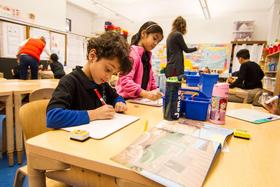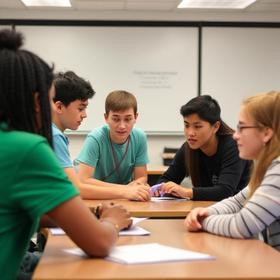For the 2025-26 school year, there is 1 public school serving 356 students in Lower Brule Day School District.
Public Schools in Lower Brule Day School District have a diversity score of 0.00, which is less than the South Dakota public school average of 0.53.
Minority enrollment is 100% of the student body (majority American Indian), which is more than the South Dakota public school average of 33% (majority American Indian).
Overview
This School District
This State (SD)
# Schools
1 School
729 Schools
# Students
356 Students
145,763 Students
# Teachers
19 Teachers
10,615 Teachers
Student-Teacher Ratio
19:1
19:1
Student By Grade
District Rank
The school district's graduation rate of 45% has increased from 40-59% over five school years.
Math Test Scores (% Proficient)
12%
42%
Reading/Language Arts Test Scores (% Proficient)
≤5%
51%
Science Test Scores (% Proficient)
11-19%
42%
Graduation Rate
45%
82%
Students by Ethnicity:
Diversity Score
0.00
0.53
% American Indian
100%
14%
% Asian
n/a
2%
% Hispanic
n/a
8%
% Black
n/a
3%
% White
n/a
67%
% Hawaiian
n/a
n/a
% Two or more races
n/a
6%
All Ethnic Groups
Best Lower Brule Day School District Public Schools (2025-26)
School
(Math and Reading Proficiency)
(Math and Reading Proficiency)
Location
Quick Facts
Rank: n/an/a
227 Bia #10
Lower Brule, SD 57548
(605) 815-5376
Lower Brule, SD 57548
(605) 815-5376
Gr: K-12 | 356 students Student-teacher ratio: 19:1
Frequently Asked Questions
How many schools belong to Lower Brule Day School District?
Lower Brule Day School District manages 1 public schools serving 356 students.
What is the racial composition of students in Lower Brule Day School District?
100% of Lower Brule Day School District students are American Indian.
What is the student/teacher ratio of Lower Brule Day School District?
Lower Brule Day School District has a student/teacher ratio of 19:1, which is higher than the South Dakota state average of 14:1.
Recent Articles

Bullying, Name-Calling & Put-Downs: Parent Guide 2025
Practical tips for parents to address bullying, name-calling, and put-downs鈥攚ith 2025 data, policies, and expert strategies.

What Is a Magnet School? (2025 Guide)
Explore what a magnet school is, how it works, and its benefits in 2025. Clear explanation for parents, students, and educators.

Cooperative Learning in 2025: Evidence, Best Practices & Challenges
Explore cooperative learning in 2025鈥攏ew data, updated practices, expert insights for educators and families.





